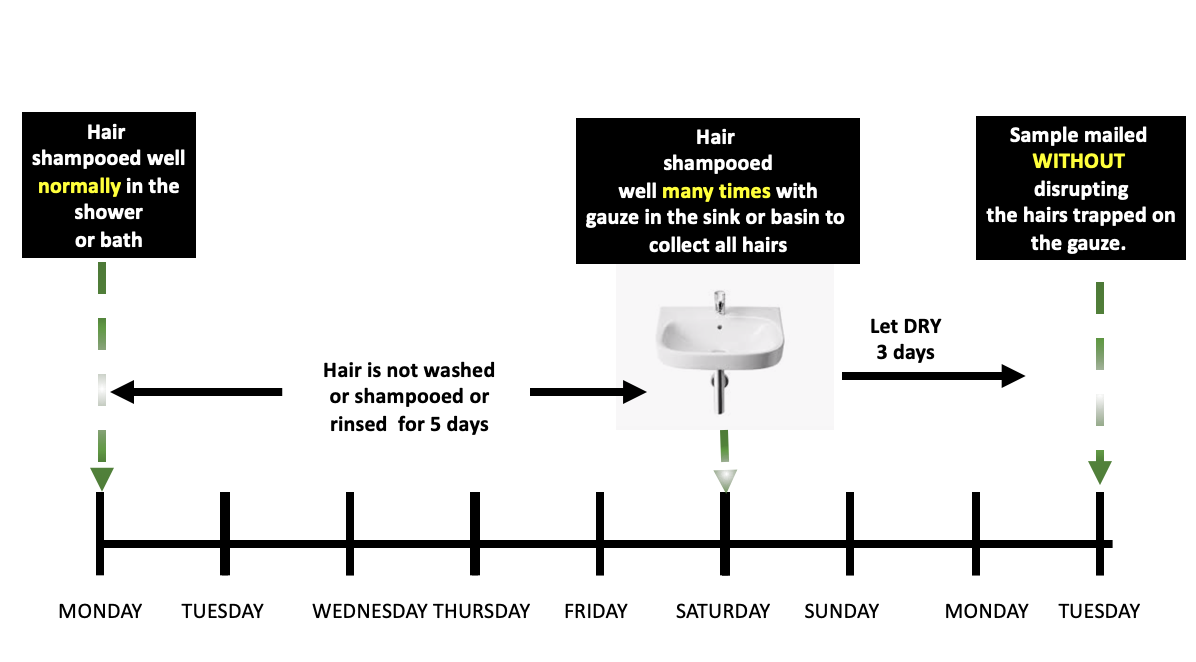How do I know if my shedding has finally stopped?
Shedding in Telogen Effluvium: How do I know if my shed has really stopped?
Patients who once experienced a telogen effluvium (TE) often want to know if their shedding rate has returned to normal or if it’s still “above baseline.”
It can sometimes be difficult for patients with hair loss to judge what is normal and what is abnormal. Many patients with hair loss will tell me that they simply lose perspective and lose the ability to judge. But others feel that they just know things are back to normal. They touch their hair throughout the day and where they once lost 1 or 2 hairs they now lose practically none.
I tell patients not to bother considering this question until a good 5 month has elapsed since they started shedding because it’s unlikely that a TE has fully resolved. A shedding episode takes about 5-9 months to fully settle once a trigger has been found. If the TE is due to a serious hypothyroid problem then it’s going to take 5-9 months for shedding to normalize once the patient starts thyroid replacement. But after that time, if one really want to know more about their shedding, there are a few strategies to consider.
STRATEGY 1. THE 5 DAY MODIFIED HAIR WASH TEST
First, a 5 day modified hair wash test (hair collection) can be done. This is a highly specialized test that requires the patient to forgo washing the hair for a full five days. After that, the hair is shampooed very well to loosen up hair that was shed and then the hairs are trapped on a gauze in the sink as the rest of the water goes down the drain. The hairs are dried and then counted. A simplified summary is shown below:
The number of hairs collected int he MHWT can give a good sense of excessive shedding. Results need to be interpreted by a dermatologist who is familiar with the performance and interpretation of this test.
2. DRAIN CATCHER TESTING
A simpler, but less accurate way to evaluate shedding, is simply to collect the hair that lost in the shower in a “drain catcher” and compare this over time. This won’t help to determine what is normal and what is not normal but will help determine changes in shedding. If the drain catcher traps less and less hair over time, then a patient’s shedding is still en route to its baseline and the patient’s TE is still in recovery but by no means “resolved.”
3. PHOTOS OF THE SCALP
A third way to evaluate hair loss and shedding is with scalp photos taken over longer periods of time. If photos show a person’s density returning back to the way it “once was” (before shedding started) and the density stays the same over a long period of time, it’s unlikely there is much in the way of a shedding problem for the person. Of course, some people have multiple hair issues goes on at the same time including androgenetic alopecia (AGA) and telogen effluvium (TE) so evaluating photos may not always be so simple. If a TE stops but AGA continues, the patient will continue to lose hair and photos will capture less and less hair over time. It would be an error in this case to assume the patient’s TE is getting worse if they start seeing less hair on the scalp. The actual answer is that the AGA is getter worse and the TE is staying the same or improving. Many patients spend months and years assuming they have a TE when in fact what they have is untreated androgenetic alopecia.
4. TRICHOGRAM OR SCALP BIOPSY
A final method is a more invasive scalp biopsy or even a trichogram. If a scalp biopsy shows the percentage of hairs in the telogen phase well under 12 % - it’s likely there is not a major shedding issue. Performing a biopsy to evaluate shedding is not recommended as it too has it’s limitations. But it can provide information in some challenging cases. The same is true with a so called ’trichogram.’ If more than 15 % of hairs are in telogen phase (shedding phase) on a trichogram, it’s likely that the shedding issue has not resolved.
Summary
Some individuals simply ‘know’ whether their shedding rates are back to normal. They can run their hands through their hair and know whether it’s normal or not. For other individuals with hair loss, it’s not quite so easy. The use of a hair wash test (5 day modified hair wash test, or photos, or trichograms, or biopsies, or evaluation of hairs collected in the shower drain can help patient’s and their doctors get a sense of whether or not shedding rates have returned back to normal.
This article was written by Dr. Jeff Donovan, a Canadian and US board certified dermatologist specializing exclusively in hair loss.

